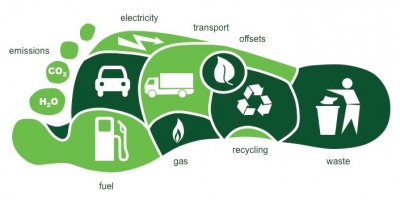
If you want to be a part of the solution to climate change, you need to check your carbon footprint.
A carbon footprint is defined as the amount of carbon dioxide, methane and other gases generated by our actions that are harmful to the planet. It is expressed in tonnes of carbon dioxide equivalent.
The average carbon footprint for a person in India is 2.7 tonnes. But this average masks the wide differences between urban and rural residents, and between rich and poor households. So if you want to be a part of the climate solution, you need to check your carbon footprint.
There are many carbon calculators on the Internet, but few are fine-tuned for the Indian consumer. Some of the local calculators are from Tata Power and ICICI Bank. The calculations cover your energy, gas, paper, and other uses whose manufacture generate carbon emissions.
Once your footprint is known, various options are available to offset your emissions. These include planting trees, helping to set up solar or bio gas installations in villages, etc.
Voluntary carbon offsets
Many airlines provide voluntary carbon offsets for domestic or international flights as part of ticketing. For example, if you fly from Mumbai to London on British Airways (BA), your round trip will generate 1.1 tCO2e in emissions. BA will charge you separately to offset the emission, which will be used to protect forests in Cambodia or Peru or supply smokeless cook stoves in Sudan.
So what is the benefit to you? There is no direct benefit, except for some satisfaction that you have done your bit for the environment, that you have been a good global citizen, and that instead of just talking about climate change, you are taking action to address the climate crisis.
Planting trees
I will give you a personal example. My carbon footprint for 2020 was 7.1 tCO2e, which is above the Indian average on account of two flights. I decided to offset this emission by contributing towards planting trees in the village of Pekhri in Himachal Pradesh. I was helping not only to create a ‘global good’ but also local villagers who had no work on account of the pandemic. The money will help Pekhri village to plant a thousand fruit, fodder and timber trees on degraded slopes. The trees will be selected by the local people. In a small way, the plantation will also help store carbon in the soil, a global benefit.
But critics of carbon offsets say this is a Band-Aid solution, that it enables the well-off people to continue to pollute the Earth and just write a cheque to offset their bad behaviour. What is needed, they argue, is a complete change in lifestyle, a behavioural change that recognises the damaging impact of consumerism on the planet.
Getting out of our comfort zone
This is a valid argument, but changing human behaviour is not easy. Try convincing a car owner in Mumbai or Delhi to give up his precious car, motorcycle or scooter! Or a middle class housewife in Chennai or Hyderabad not to run the home air conditioner in the summer. Comfort and convenience are the hallmarks of a modern lifestyle. To convince the urban middle class to move out of its comfort zone is very hard, but one must try through raising awareness.
Calculating one’s carbon footprint is the start of this awareness. As my high schoolteacher said, “To be a part of the solution, you must recognise you are part of the problem.” You can’t solve the climate crisis without recognising your role in it.
Picture Credit : Google




